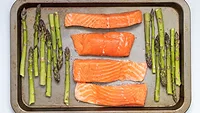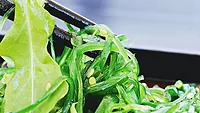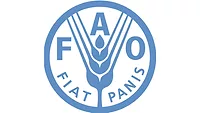Seaweed Food Safety Knowledge is Limited; FAO, WHO Call for Research, Regulation

Credit: Patrick Perkins (patrickperkins) via Unsplash
The Food and Agriculture Organization of the United Nations (FAO) and the World Health Organization (WHO) have released a report that reviews the current available information about the food safety of seaweed, both harvested from the wild and produced through aquaculture. The Report of the Expert Meeting on Food Safety for Seaweed—Current Status and Future Perspectives was compiled during a Joint FAO/WHO Expert Meeting on Seaweed Safety in October 2021.
The report raises a concern with the limited existing data on seaweed food safety, suggesting that the commodity may carry certain chemical, microbiological, physical, and allergen risks. The report recommends several actions to increase the safety of seaweed consumption while collecting more information about the product, aiming to support the development of appropriate Codex Alimentarius guidelines and regional regulations.
The consumption of seaweed has grown rapidly in recent years, according to the report. In 2018, global seaweed production exceeded 32 million tons, tripling from about 11 million tons in 2000. Since seaweed is a promising sustainable food crop, the report notes, the expansion of using seaweed as a food has been suggested. However, seaweed is known to accumulate hazardous substances from the environment, which may pose risks to food safety. Additionally, despite the increasing global seaweed trade, there is no Codex standard or guidelines that specifically address the commodity’s food safety, and national and regional regulatory harmonization is lacking.
Although reports of morbidities and mortalities linked to the consumption of seaweeds are rare, there is an acknowledged dearth of data on the occurrence of hazards in seaweed, as well as a general lack of attention on the role of seaweed in foodborne illnesses. However, based on the limited information available, the report lists various chemical, microbiological, and physical hazards that may be associated with edible seaweed:
- Chemical hazards of seaweed may include, but are not limited to: toxic heavy metal contaminants (e.g., lead, arsenic, mercury, and cadmium), excessive iodine and aluminum, pesticide residues, radionuclides (e.g., Polonium, Beryllium, Thorium, Radon, Strontium, Caesium, and Plutonium), persistent organic pollutants (e.g., dioxins and polychlorinated biphenyls), allergens, and biotoxins
- Microbiological hazards of seaweed may include, but are not limited to: pathogenic bacteria (e.g., Salmonella, Bacillus, Escherichia coli, Listeria monocytogenes, Staphylococcus aureus, and Vibrio parahaemolyticus), viruses (e.g., norovirus and hepatitis E), biotoxins, dinoflagellate toxins, and cyanobacteria
- Physical hazards of seaweed may include, but are not limited to: metal pieces from harvesting or processing, glass splinters, micro- and nanoplastics, and small crustaceans or invertebrates.
Additionally, alongside seaweed’s possible contamination by allergens such as shellfish, the report acknowledges the probable allergenicity of seaweed itself. The report also ranked the significance of food safety hazards in seaweed based on the intrinsic properties of the hazards, the point in the supply chain at which they occur, processing and handling practices, available literature, and other factors. The report identified five hazards as “major”: arsenic, cadmium, iodine, and Salmonella. “Moderate” hazards include lead, mercury, aluminum, Bacillus, and norovirus.
The report also notes factors that may influence the occurrence of food safety hazards in seaweed, such as the cultivation environment, the species of seaweed, the seaweed’s age before harvesting (especially for wild seaweed), and processing and handling practices. Regarding the cultivation environment, the sites of wild harvesting and site selection for seaweed farming have significant impacts on the final quality and safety of the commodity, and wild-harvested seaweed is more prone to contamination. Different species of seaweed also carry varied levels of food safety risk, with brown and red seaweeds found to have the highest and lowest contamination accumulation capacities, respectively. Additionally, the more mature seaweed is when it is harvested from the wild, the more likely it is to have higher levels of hazardous contamination. Finally, seaweed processing methods may also influence the types of hazards that are present in the products—for example, toxigenic mold is more of a concern for shelf-stable, dried seaweed than raw seaweed.
The report concluded that future work is needed to ensure the food safety of seaweed as it grows as an edible commodity. Recommendations include:
- Evaluate seaweed as food and feed, highlighting national and regional differences and their corresponding impacts on food security and trade
- Evaluate seaweed primary production methods at the national and regional levels, as well as the impacts of production methods on the products’ chemical, microbiological, and physical hazards
- Monitor seaweed for food safety hazards to produce data on the occurrence of hazards per species and per product
- Develop Codex guidelines for seaweed cultivation and harvesting
- Conduct a risk assessment of the “major” hazards identified to establish their public health significance, and provide evidence for the development of seaweed food safety regulations and enforcement.
Looking for quick answers on food safety topics?
Try Ask FSM, our new smart AI search tool.
Ask FSM →









